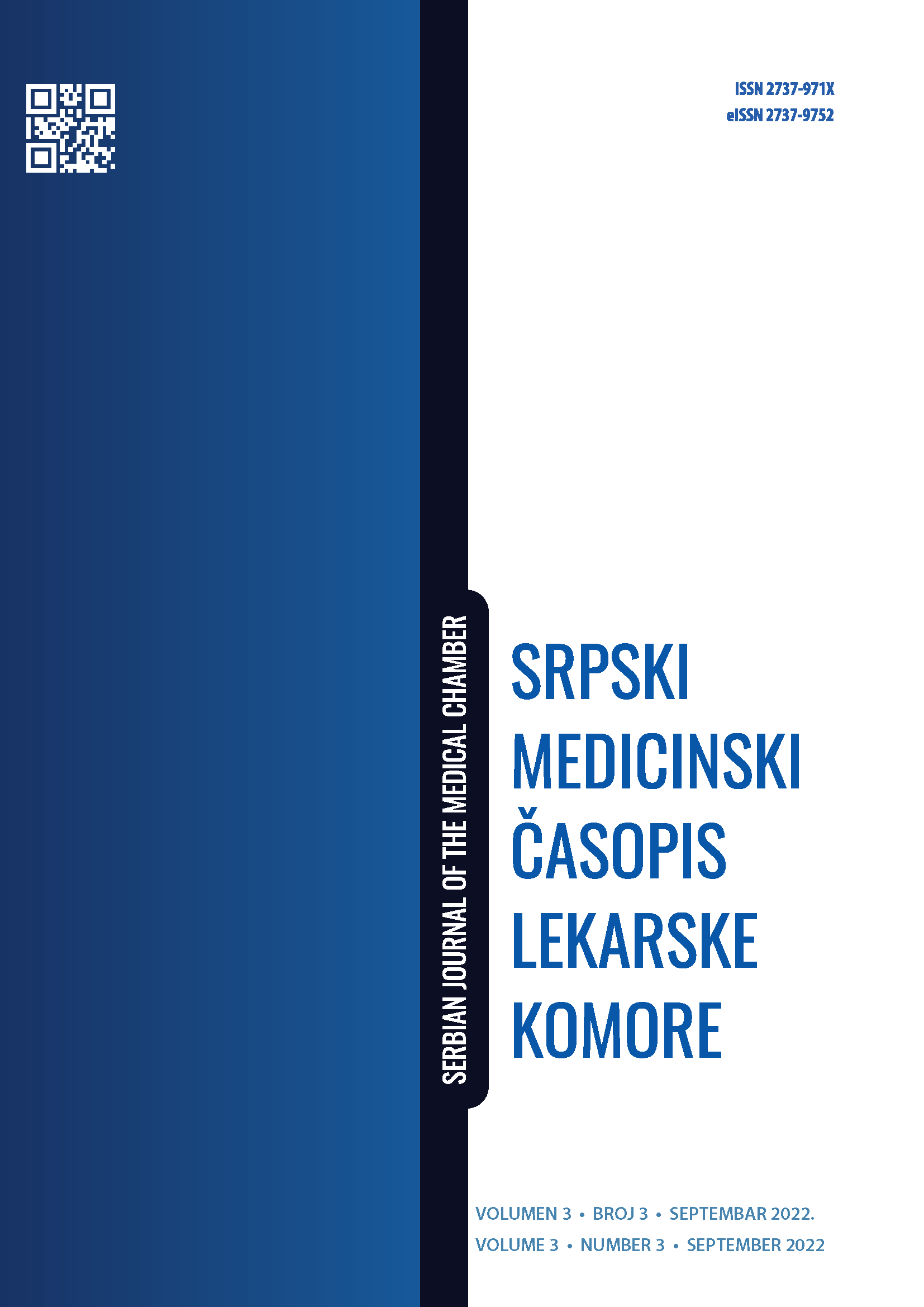CLINICAL EPIDEMIOLOGY OF DOMESTIC AND INDUSTRIAL HAND AND WRIST CIRCULAR SAW INJURIES
Abstract
Introduction: Hand injuries are extremely common. It is estimated that almost a quarter of all injuries treated in the emergency department are hand injuries, due to the fact that the hand is highly exposed to trauma, as the result of its function and its protective movement. These injuries are usually seen in the young working age population, and they involve simultaneous damage to several different tissues.
Aim: The purpose of this study is to evaluate the frequency and characteristics of hand injuries sustained by the circular saw, as well as to assess existing risk factors, in order to improve the prevention of these injuries.
Materials and methods: This is a retrospective study involving 365 patients, treated during a five-year period. The patients suffered hand injury with a circular saw, either at home or at work. All patients were surgically treated at a single medical center. The patients were mostly men, with an average age of 48.6 ± 14.71 years. The data, which was collected from the medical records, included localization and type of injury, dominance of the injured hand, the type of surgical procedures performed, and the length of hospital stay.
Results: The non-dominant hand was injured more often (62%), and this was usually the left hand (60%). The majority (83.2%) of patients were injured at home, while significantly less patients were injured in the workplace (16.7%). Most often, the patients sustained injuries to several different tissues, while there were only 12.5% of isolated injuries. The most commonly injured structures were extensor tendons of the wrist and fingers (245), followed by phalanges (226). Most of the patients sustained injury to one finger (35.1%), especially the thumb (68.4%), while two fingers were injured in 35.1% and three fingers in 20% of cases. The hand was injured in 7.27% of the cases, and the forearm was injured in 5.45% of the cases. Of the 995 surgical procedures carried out in total, the most commonly performed operation was tenorrhaphy (44.67%), followed by fracture fixation (29.3%). Finger reamputation was performed in 6.67% of cases, neurorrhaphy in 6%, and tendon reinsertion in 4% of cases. There was a total of 46 replantations (4.67%), and 27 revascularizations (2.67%). The average length of hospital stay was 9.04 ± 3.91 days.
Conclusion: Working with a circular saw is a high-risk activity. The injuries sustained are severe. They can result in significant functional deficit and have major socioeconomic consequences. Lack of prior training and improper handling are clear risk factors. Clinical and epidemiological analysis is therefore of extreme importance, as it can be the key to the prevention of these injuries.
References
Hadj Hassine Y, Hmid M, Baya W. Trauma of the hand from circular saw table: a series of 130 cases. Tunis Med. 2016 Dec;94(12):851. PMID: 28994884.
Gordon AM, Malik AT, Goyal KS. Trends of hand injuries presenting to US emergency departments: A 10-year national analysis. Am J Emerg Med. 2021 Dec;50:466-471. doi: 10.1016/j.ajem.2021.08.059.
Testera kružna stacionarna (prospekt proizvođača), HS100E, Womax, Lammstrasse 81, Heidenheim, Nemačka 2017.
Sabongi RG, Erazo JP, Moraes VY, Fernandes CH, Santos JBGD, Faloppa F, et al. Circular saw misuse is related to upper limb injuries: a cross-sectional study. Clinics (Sao Paulo). 2019;74:e1076. doi: 10.6061/clinics/2019/e1076.
Frank M, Hecht J, Napp M, Lange J, Grossjohann R, Stengel D, et al. Mind your hand during the energy crunch: Functional Outcome of Circular Saw Hand Injuries. J Trauma Manag Outcomes. 2010 Sep 6;4:11. doi: 10.1186/1752-2897-4-11.
Trybus M, Lorkowski J, Brongel L, Hladki W. Causes and consequences of hand injuries. Am J Surg. 2006 Jul;192(1):52-7. doi: 10.1016/j.amjsurg.2005.10.055.
Fikry T, Saidi H, Latifi M, Essadki B, Zryouil B. La main traumatique par toupie: pour une meilleure prévention [Hand trauma from table saw: best prevention]. Chir Main. 2004 Apr;23(2):96-9. French. doi: 10.1016/j.main.2004.02.001.
Hoxie SC, Capo JA, Dennison DG, Shin AY. The economic impact of electric saw injuries to the hand. J Hand Surg Am. 2009 May-Jun;34(5):886-9. doi: 10.1016/j.jhsa.2009.02.002.
Frank M, Lange J, Napp M, Hecht J, Ekkernkamp A, Hinz P. Accidental circular saw hand injuries: trauma mechanisms, injury patterns, and accident insurance. Forensic Sci Int. 2010 May 20;198(1-3):74-8. doi: 10.1016/j.forsciint.2010.01.003.
Cvetković M, Vasiljević P. Handedness and phenotypic characteristics of the head and face. Genetika. 2015; 47(2):723-31.
Al-Qattan MM. Saw injuries causing phalangeal neck fractures in adults. Ann Plast Surg. 2012 Jul;69(1):38-40. doi: 10.1097/SAP.0b013e31821ee453.

